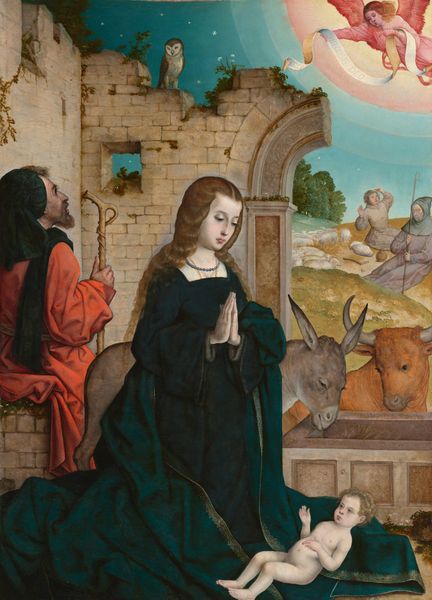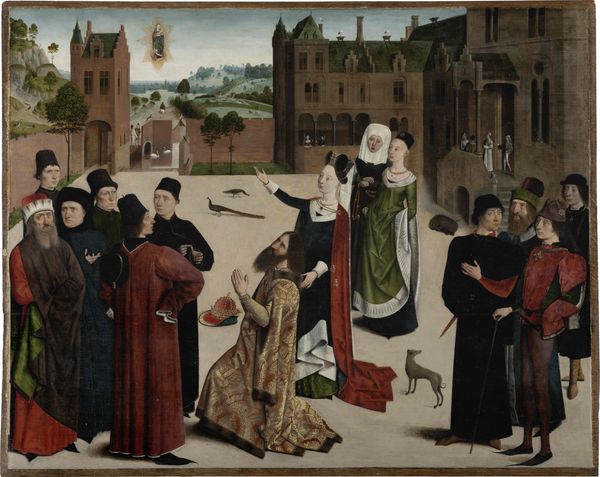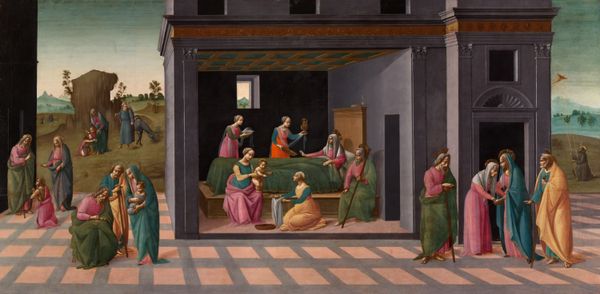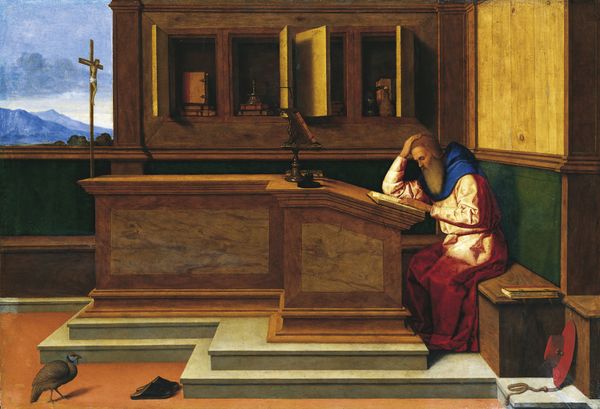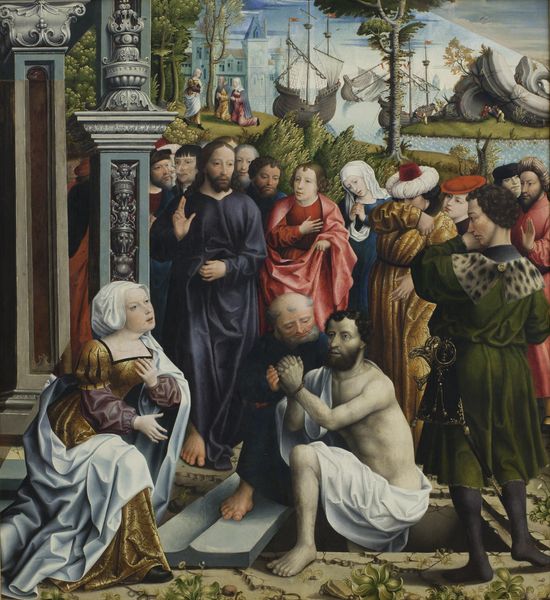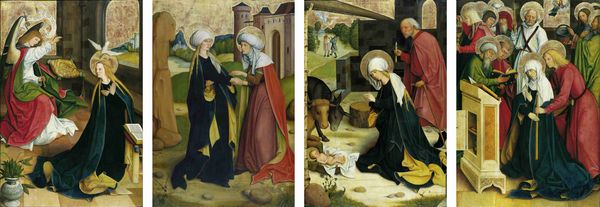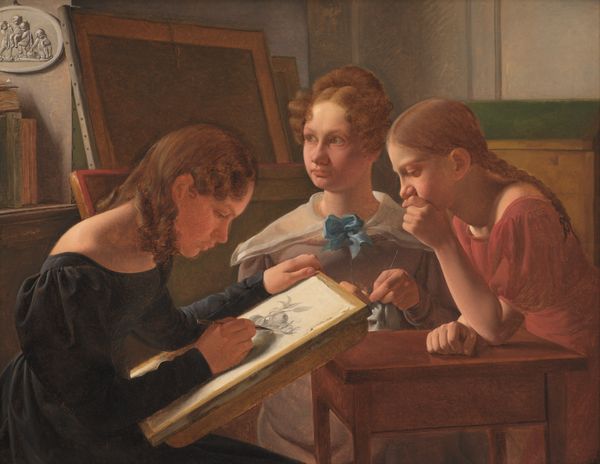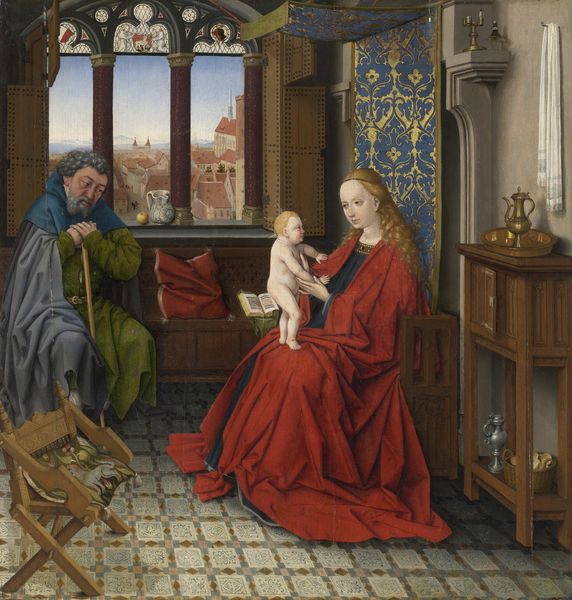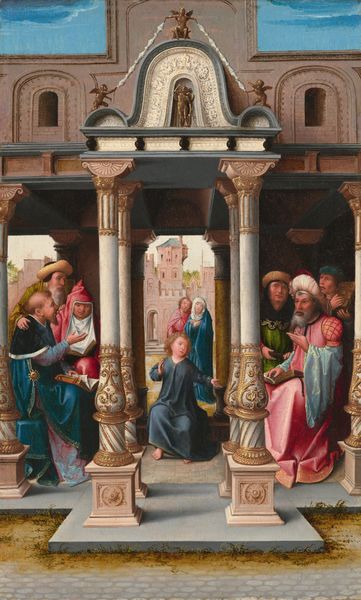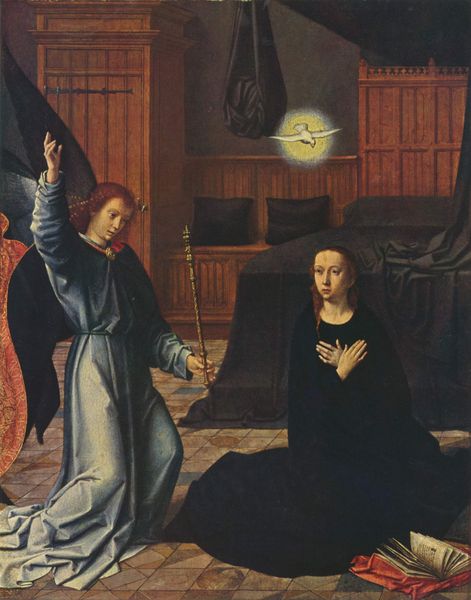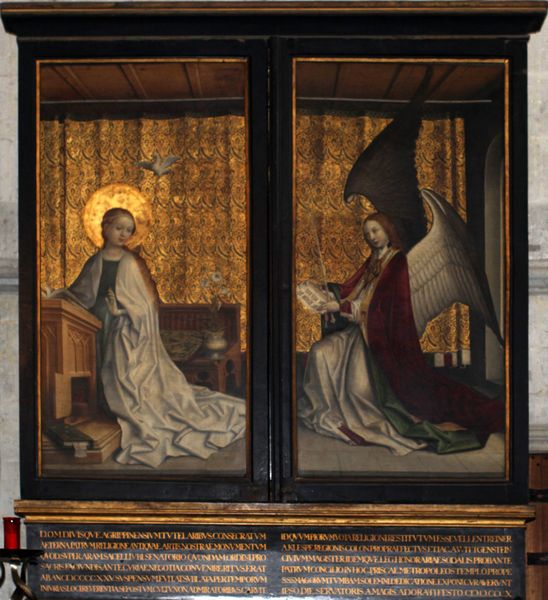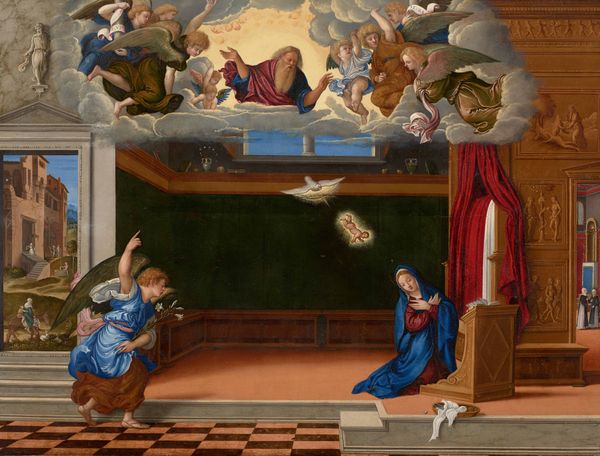
painting, oil-paint
#
narrative-art
#
painting
#
oil-paint
#
oil painting
#
history-painting
#
italian-renaissance
Dimensions: painted surface: 91.5 x 78 cm (36 x 30 11/16 in.) original panel: 94 x 79.4 cm (37 x 31 1/4 in.) framed: 109.5 x 95.7 x 7.6 cm (43 1/8 x 37 11/16 x 3 in.)
Copyright: National Gallery of Art: CC0 1.0
Editor: This panel painting, "A Miracle of Saint Benedict," dating to around 1480, is quite striking! The scene seems divided, with a serene figure on the left contrasting a more chaotic one on the right. Made with oil paint, its artist is currently unknown. How do you interpret the social context of an artwork like this? Curator: This piece throws light on the intersection of religious devotion and social order during the Renaissance. We see St. Benedict, often associated with monastic reform, but it's key to examine the patronage here. Was it commissioned by a monastic order eager to showcase their legitimacy, or by a wealthy individual seeking to display piety and social standing through religious art? The choice to depict this miracle—a narrative of rescue and divine intervention—certainly carries a political dimension. How might this imagery have been received and understood by its intended audience? Editor: I suppose showcasing the saint's power would solidify the Church's authority, but it's interesting how the two scenes feel so distinct. One of reflection, one of intervention. Curator: Precisely. And that dichotomy might also reflect a tension within Renaissance society itself: a growing interest in worldly affairs juxtaposed with a persistent need for spiritual assurance. Considering its placement - likely in a private chapel or monastic setting - this image actively participated in shaping viewers' beliefs about power structures both temporal and divine. Does this dual narrative offer some reflection on its potential social function? Editor: It's amazing to think how a painting like this could be used to bolster societal power. Curator: Indeed. Art is never just 'art,' it's deeply embedded within and actively shapes the cultural landscape of its time. This piece encourages us to delve into understanding the socio-political reasons behind its creation, the venue it had been installed, and how that contributes to its function in that time.
Comments
No comments
Be the first to comment and join the conversation on the ultimate creative platform.

